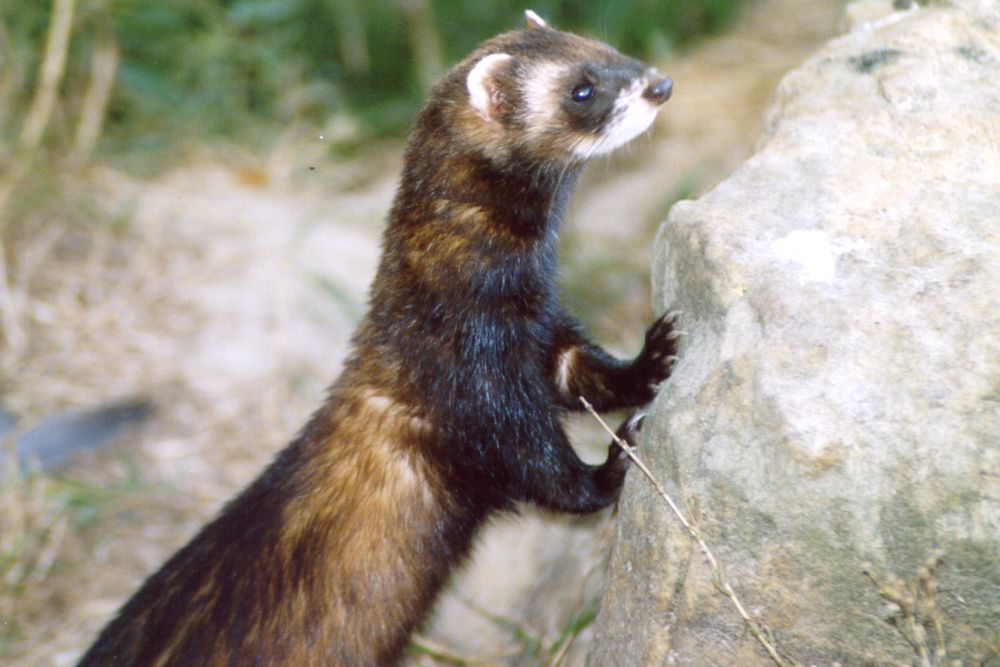Polecat

Status
Native, locally common in Egland and Wales and parts of Scotland
Population
83,300
Scientific name
Mustela putorius
The polecat population has been recovering for almost a century, after heavy persecution by gamekeepers. Polecats have long bodies and short legs and their fur is two-toned; each hair is creamy-yellow at the base and black at its tip, giving an overall dark brown appearance. They have characteristic white markings on the end of their snout and the tips of their ears. They are mostly active at night and keep to the shelter of forests. They hunt mainly on the ground, relying on hearing and smell, and are poor climbers. Dens may make use of rabbit warrens or badger setts, or spaces under tree roots, and are lined with leaves and grass. When the polecat is frightened or injured, it emits a foul smell from anal glands in an attempt to deter its predators. This gives it its Latin name ‘putorius’, which means ‘foul smelling musk-bearer’.
Head-body length: 30 – 45cm
Tail length: 12 – 14cm
Weight: 600 – 900g
Lifespan: Up to 5 years
Reproduction
Mating occurs from March to April and a litter of 5 – 10 kits is born from May to July. Week-old kits have a thin covering of silky, white fur that is replaced with a brown-greyish coat at 3 – 4 weeks. Weaning begins at three weeks and the young are independent by 2 – 3 months old.
Diet
Rodents, rabbits, frogs and toads, and small mammals. Birds’ eggs, fish, invertebrates and carrion are also sometimes eaten.
Habitat
Various habitats including woodland, coastal dunes, river valleys and often around farmland.
Predators
Sometimes killed by dogs and possibly by foxes and birds of prey.
Threats
Road traffic accidents; trapping; and shooting.
Conservation status
GB Red List: Least Concern (LC).
Population size and distribution
GB population: 83,300. In England, populations are mostly in central and southwest areas. They are absent in Ireland.
Did you know?
Polecats seize their prey with their canines, killing it with a bite to the neck, which is perfected with practice. They can kill prey as large as a goose or hare.
